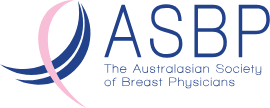TRIPLE-MODALITY SCREENING TRIAL FOR FAMILIAL BREAST CANCER UNDERLINES THE IMPORTANCE OF MAGNETIC RESONANCE IMAGING AND QUESTIONS THE ROLE OF MAMMOGRAPHY AND ULTRASOUND REGARDLESS OF PATIENT MUTATION STATUS, AGE, AND BREAST DENSITY
Purpose
To evaluate the breast cancer screening efficacy of mammography, ultrasound, and magnetic resonance imaging (MRI) in a high-risk population and in various population subgroups.
Patients and Methods
In a single-center, prospective, nonrandomized comparison study, BRCA mutation carriers and women with a high familial risk (> 20% lifetime risk) for breast cancer were offered screening with mammography, ultrasound, and MRI every 12 months. Diagnostic performance was compared between individual modalities and their combinations. Further comparisons were based on subpopulations dichotomized by screening rounds, mutation status, age, and breast density.
Results
There were 559 women with 1,365 complete imaging rounds included in this study. The sensitivity of MRI (90.0%) was significantly higher (P < .001) than that of mammography (37.5%) and ultrasound (37.5%). Of 40 cancers, 18 (45.0%) were detected by MRI alone. Two cancers were found by mammography alone (a ductal carcinoma in situ [DCIS] with microinvasion and a DCIS with < 10-mm invasive areas). This did not lead to a significant increase of sensitivity compared with using MRI alone (P = .15). No cancers were detected by ultrasound alone. Similarly, of 14 DCISs, all were detected by MRI, whereas mammography and ultrasound each detected five DCISs (35.7%). Age, mutation status, and breast density had no influence on the sensitivity of MRI and did not affect the superiority of MRI over mammography and ultrasound.
Conclusion
MRI allows early detection of familial breast cancer regardless of patient age, breast density, or risk status. The added value of mammography is limited, and there is no added value of ultrasound in women undergoing MRI for screening.
To read more please go to the article.
